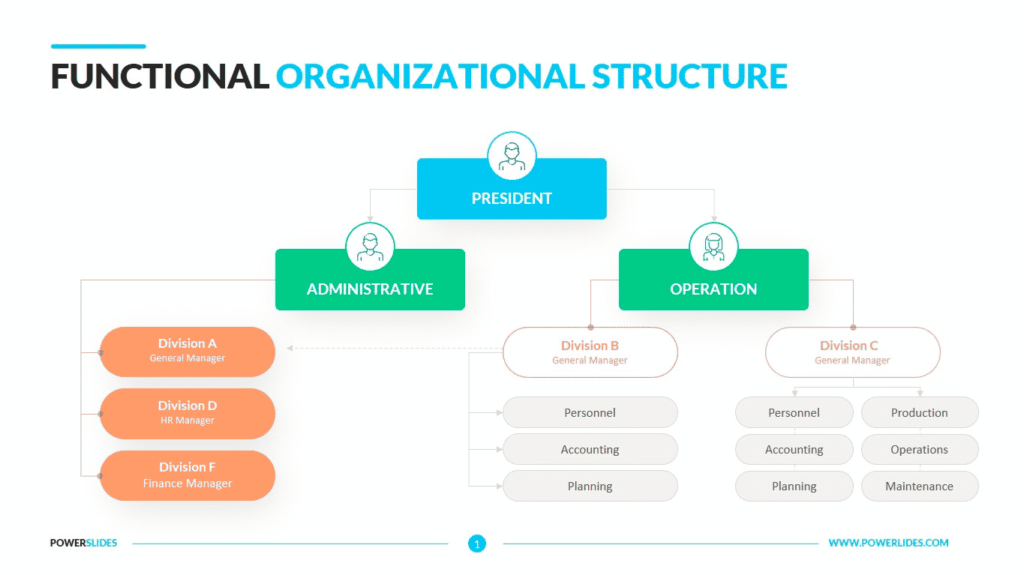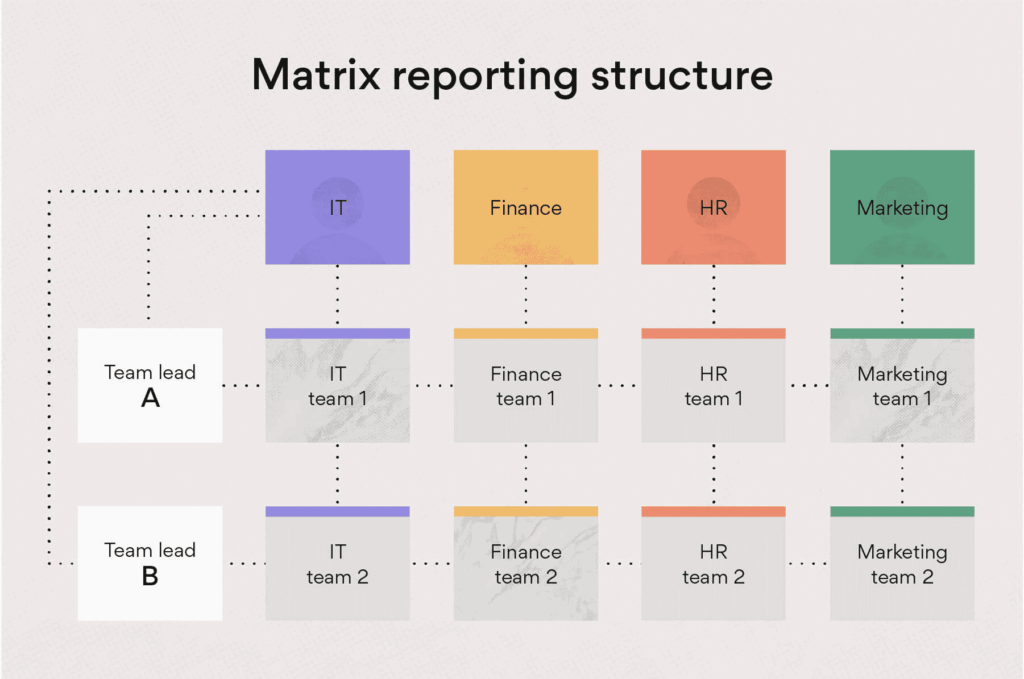Do I need an organizational chart for my small business?
An organizational chart is a visual representation of how the various levels and people in a company relate to each other and the chain of command. The concept is simple: Person A reports to Person B, who reports to Person C, and so on. In practice, however, getting that structure right can be tricky for a small business.
There’s no reason you shouldn’t have an organizational chart for your business. While it may seem like a human resources tool designed for larger organizations with multiple layers of management (and it does serve that purpose), an organization chart can be just as helpful for a small business or startup with only one owner/manager and one employee.
This is especially true if you have plans to grow your home service business in the future—an organizational chart will help you plan for that growth. A well-designed organizational chart goes hand-in-hand with creating job descriptions, establishing expectations, strategic decision-making and cross-functional coordination.
In this article, we will cover types of organizational charts to help you understand what would work best for your business.
Signpost is used by thousands of service businesses to build a trusted online reputation. Let us show you how our review software works.
Types of Organizational Charts
Depending on your business needs and model, the reporting structure of your business may change. Keep reading to learn some of the most common structures you can use to define your business operations.
Hierarchical Organizational Structure
The most basic form of organizational chart is the hierarchical chart. This is the simplest way to illustrate the structure of employees within a company. It uses boxes to represent top-down positions within that organization and employs lines between boxes to indicate relationships.
In a company with a hierarchical structure, employees are generally organized by rank into different levels, such as “executive” and “administrative.” As we can see in the example below, each level has its own specific responsibilities and reports directly to the level above it:

Source: URLSpark
In the context of home service businesses, a small business owner would be at the very top of the business structure, followed by supervising managers and then front-line employees.
Functional Organizational Structure
The functional structure divides a company by its functions, such as field service or marketing. If a company offers one product or service, it will create different departments for each activity in the production and sales process. The functional structure is most common among small businesses.
Let’s say you own a contracting business that builds homes. There are many beneficial aspects of this team, including administration, sales, and production. Your organizational chart would group these employees together based on their skill sets.

Source: PowerSlides
The divisional structure would therefore be divided on the basis of the services you offer. This helps provide a more collaborative environment, as the key managers (like HR and finance), would be able to also communicate with the different heads of each functional division, providing more unanimity and sources of information in the organization.
Line and Staff Organizational Structure
A line and staff organizational structure is a combination of the line structure and the functional structure. The difference lies in the number of managers in each position: for example, instead of one manager overseeing a team, there could be two or more, with an expert or specialist supporting each manager.
In a line and staff organizational chart, experts or specialists are employed in staff positions to advise, support, or serve line positions. Staff positions can also include roles with specialized jobs such as human resources (HR), marketing, or electricians.
Line employees are the ones who directly contribute to achieving the company’s goals and objectives while staff positions provide support to them by advising different methods on how to achieve their goals. You can see an example below

Source: Toppr
Line and staff structures work best for companies that need to move quickly within shifting markets or other fast-changing demands. For example, an HVAC company may need to adapt its sales on short notice during seasonal demand so a line and staff structure will give them the flexibility they need.
Project-based Organizational Structure
In a project-based structure, the management team is organized based on projects, such as a new home construction or a re-roof. Each project is managed by a project manager and the employees are assigned to the project managers as needed. When the project is complete, the employees are reassigned to new projects.
Let’s look at an example of this type of organizational structure in a small business setting. The owner of an electrician business could have the levels of management centered around each specific type of customer request the business typically receives. The owner could hire electricians who are led by foremen who oversee them.
The owner could also hire office staff members to take customer requests and manage paperwork at the home office. In this case, the organizational chart would have employees who work on various projects for customers and additional office staff members who work internally on administrative tasks for the company.
The chart would resemble something along the lines of this:

Source: Project Management Skills
Matrix Organizational Structure
Organizations of any size often use the matrix organizational structure. It’s a way to manage groups of workers without creating bottom-up, traditional hierarchies. The matrix keeps all employees working in the same areas while allowing employees to maintain autonomy and ownership of their own specialties and having them report to multiple team leaders.
A combination of two or more structures, the matrix is an effective step in making sure people are being used for their specific skills rather than just moving from project to project.

Source: Asana
Matrix organizational structures are common in large companies that offer multiple products or services at a global level. They tend to be complex because they consist of many elements, such as teams with flat hierarchies, project teams with independent workflow processes, and cross-functional teams with accountability for each member’s deliverables. This can make them hard to understand and maintain as they grow over time.
As a result, you might not see matrix structures used as much by small local businesses.
Circular Organizational Structure
A circular organizational structure is a unique way to organize your business. This structure gives all employees the same level of authority, so it can be very efficient if you want to give each member of your team a chance to contribute.

Source: Lucidchart
This type of structure is also called vitalistic or holistic because it focuses on making decisions that benefit the whole organization rather than individual departments or individuals. If your company values collaboration and wants to encourage employees at all levels to contribute their ideas and perspectives, then this might be an ideal way for you to set up your business.
In practice, this type of organization can be confusing as there is no distinction in the communication or product lines. However, it can fare well for smaller or flatter organizational structures where the business is just starting out and keeping morale high is a priority.
How to make a small business organizational chart
Though an organizational chart may seem like a simple concept, deciding how to organize and arrange the hierarchy of your business is a big decision. A clear and concise organizational chart can help you quickly visualize and share your business structure, which will lead to better communication and more efficiency.
To get started making your own organizational chart, follow these simple steps:
Identify your company’s top-level (or executive) positions. The highest position in the company should be placed at the top of the organization chart (such as the business owner), but this can vary depending on type of business.
Include other high-level positions below the executive level, such as vice presidents or department heads.
Add in the middle management levels. This could include supervisors and other key managers who have direct reporting relationships with employees but aren’t ‘on the ground’, facing customers.
Add lower-level employees beneath their direct supervisors in their respective departments.
Organizational Chart Templates
Inspired to start defining your management structure after seeing the organizational chart examples above? Fortunately, the internet has a plethora of org chart templates you can use today. Here are some links to the top ones you can get started with:
TemplateLab’s 32 free organizational chart templates
HubSpot’s illustrated guide to organizational structures with 7 free templates
Visme’s org chart maker tools
As you hammer out your small business org chart, let Signpost take care of the rest
You’ve just learned how to create a small business organizational chart. By now, you know it is not as simple as it looks. Accounting for the higher divisions, all your team members and creating a strong management structure can take time.
While you’re busy hammering out the details of job titles and the chain of command, let Signpost take care of the rest of your marketing efforts.
Our software will help you manage customer queries, your marketing campaigns and customer service while you build a strong groundwork for your business’s future success.
If you need review management software for your business without the headache, Signpost is a cost-effective solution. Request a demo today.

